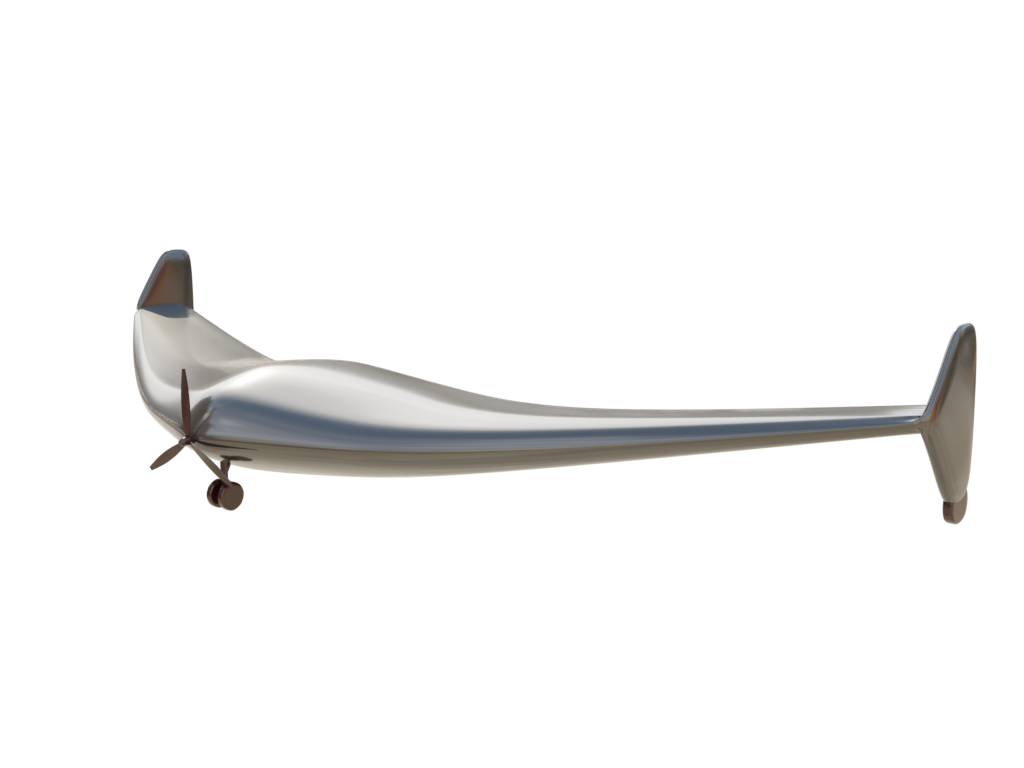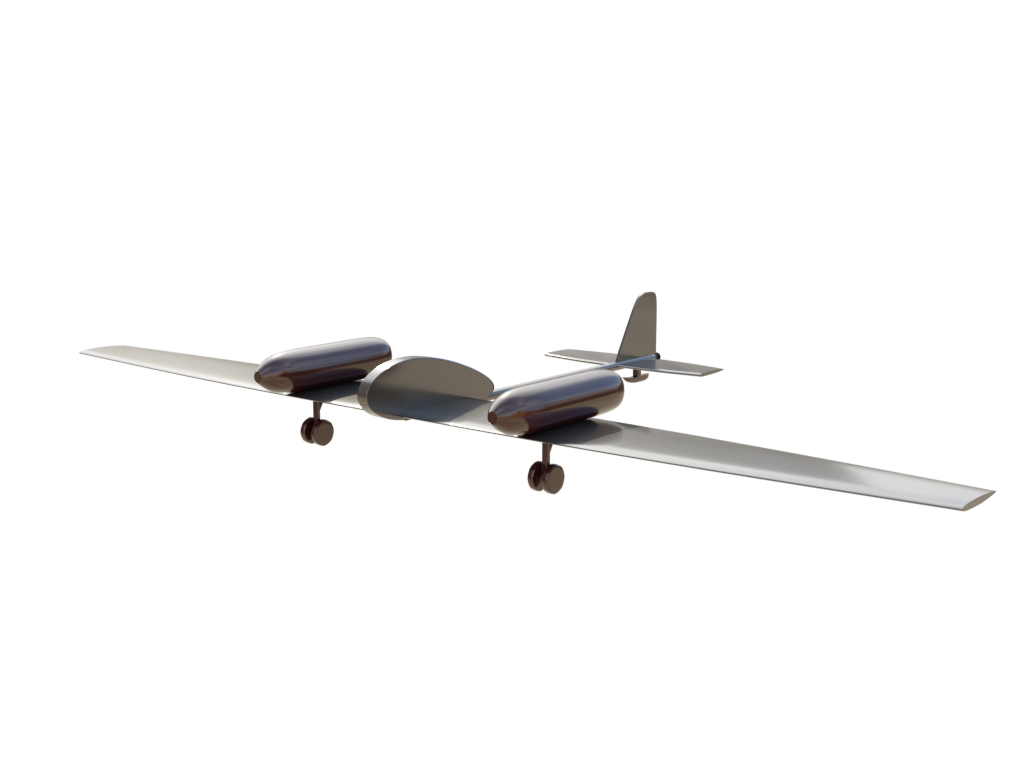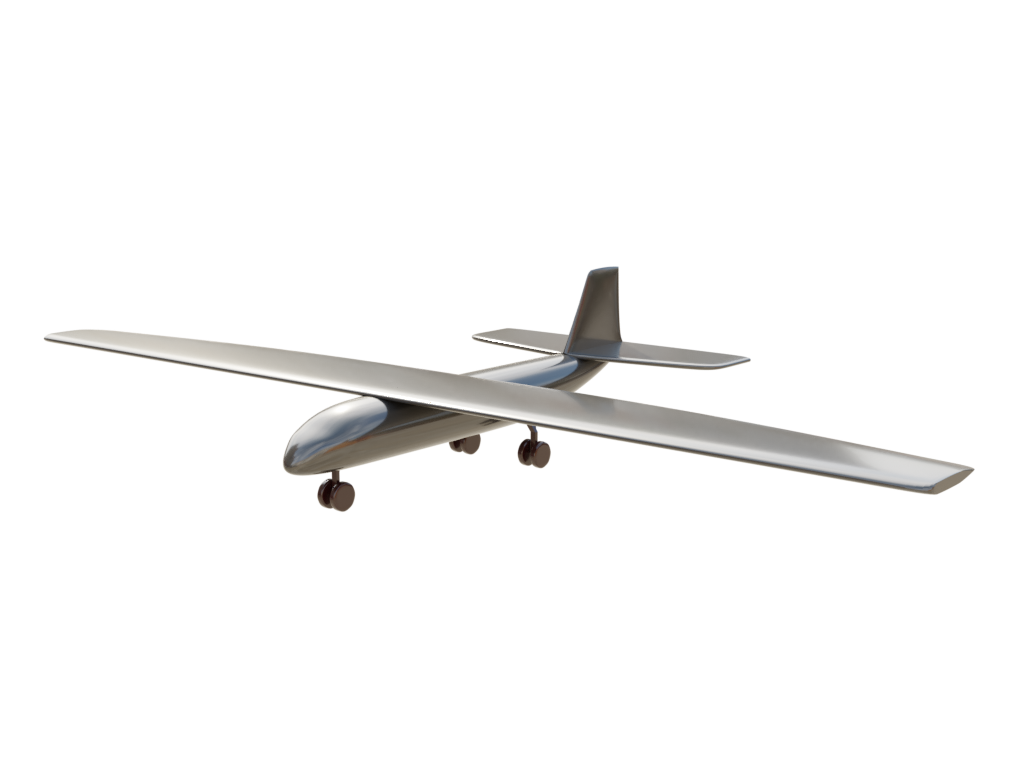Concept Selection
The score multiplier for each assessment criteria is based on the criteria's relevance to the objectives set out by the BMFA. As the scoring of the competition is based entirely on the ratio between payload and OWE, the score multiplier for weight has the greatest influence on the overall score relative to the other factors. Another rule, where relevant, is the ability for the payload to be removed which leads to this factor having a high score multiplier. Other assessable factors which are relevant to each of the components are ease of manufacture and assembly along with repairability, which need to be considered when choosing a configuration to ensure its feasibility.
The score range for each of the criteria is from 1 to 5 with a score of 5 being most favourable, 3 being average and 1 being poor. The score given for each criteria is based on the relative performance of all of the configurations being considered.
Landing Gear#
| Score Multiplier | Skids | Tail Dragger | Tricycle | Wing Mounted Tricycle | |
|---|---|---|---|---|---|
| Ground Stability | 0.2 | 3 | 4 | 3 | 5 |
| Durability | 0.25 | 3 | 3 | 4 | 2 |
| Drag | 0.1 | 4 | 3 | 4 | 5 |
| Weight | 0.2 | 4 | 3 | 2 | 3 |
| Ease of Manufacture | 0.1 | 2 | 3 | 3 | 1 |
| Ease of Assembly | 0.05 | 3 | 4 | 3 | 1 |
| Repairability | 0.1 | 3 | 3 | 2 | 1 |
| Overall | 3.2 | 3.25 | 3.05 | 2.85 |
In order for the aircraft to support its own weight, including that of the payload, the durability and shock resistance of the undercarriage upon landing has been given the highest score multiplier [Mouritz, 2012]. This ensures that the aircraft can perform nominally for all three required circuits.
In terms of ground stability, a taildragger would offer more than an in-board tricycle undercarriage [Monroe Aerospace, 2020], and hence reduces the risk of toppling during landing and take-off. Although a wing-mounted tricycle configuration would be more beneficial in this regard, it looses points in the remaining parameters. Despite a taildragger's tendency to nose-over if handled incorrectly [McDowell, 2021], its ease of assembly and repairability gives an advantage compared to the more durable tricycle configuration.
Fuselage#
| Score Multiplier | Rod & Pod | Tubular | Blended Wing Body | No Dedicated Fuselage | |
|---|---|---|---|---|---|
| Payload Accessibility | 0.2 | 5 | 3 | 3 | 3 |
| Drag | 0.1 | 4 | 3 | 5 | 5 |
| Weight | 0.3 | 4 | 3 | 2 | 5 |
| Ease of Manufacture | 0.1 | 5 | 4 | 3 | 5 |
| Ease of Assembly | 0.1 | 3 | 3 | 5 | 5 |
| Repairability | 0.2 | 4 | 3 | 2 | 5 |
| Overall | 4.2 | 3.00 | 2.90 | 4.60 |
Most fixed-wing model aircraft use the rod and pod configuration [Market Research] and attach the payload externally to make accessibility easy. The reduction in structural components for this configuration, also simplifies the maintenance and manufacturing process. While both tubular and blended wing configurations require a more complex manufacturing process, the blended wing has a larger wetted area, increasing the overall lift coefficient and reducing the induced drag [Shrivastav, 2018].
Power Plant#
| Score Multiplier | Pusher | Tractor | EDF | |
|---|---|---|---|---|
| Thrust Efficiency | 0.25 | 3 | 4 | 5 |
| Stability | 0.25 | 2 | 4 | 3 |
| Prop-Wash | 0.10 | 5 | 1 | 5 |
| Ease of Assembly | 0.10 | 3 | 4 | 1 |
| Ease of Manufacture | 0.10 | 5 | 5 | 2 |
| Repairability | 0.20 | 5 | 5 | 1 |
| Overall | 3.55 | 4.00 | 3.00 |
A tractor (or puller) propeller configuration offers the best general performance compared to the pusher configuration. This implies that a tractor configuration is preferred over the former, because of its improved in-flight stability, and added manoeuvrability [Herbert, 2019]. These two are major parameters in guaranteeing a full completion of the required circuits.
The main issue with a tractor configuration, however, is the effect of prop-wash on the lift characteristics of the inboard wing sections [Benyamen, 2020]. Despite this, the tractor configuration remains the best choice according to the final score.
An EDF (Electric Ducted Fan) may offer more thrust [FliteTest, 2018], but its position on the aircraft would compromise the stability and manoeuvrability, and implementing an EDF into the aircraft design would be more difficult. Hence, the final choice for the propeller configuration is the tractor configuration.
Tail#
| Score Multiplier | Conventional | V-Tail | Tailless | |
|---|---|---|---|---|
| Weight | 0.30 | 2 | 3 | 5 |
| Stability | 0.30 | 4 | 3 | 1 |
| Drag | 0.15 | 2 | 4 | 5 |
| Ease of Manufacture | 0.05 | 4 | 3 | 5 |
| Ease of Assembly | 0.10 | 4 | 2 | 5 |
| Repairability | 0.10 | 4 | 3 | 5 |
| Overall | 3.10 | 3.05 | 3.80 |
Considering that the design of the tail would affect the stability, manoeuvrability and structural efficiency of the aircraft, weight and stability have been given the highest score multiplier.
The tailless configuration has the highest score, as the absence of a tail reduces the overall aircraft drag, but it also reduces the stability of the aircraft significantly. On the other hand, due to the reduced manufacturing it is both cost and time efficient [Gudmundsson, 2014].
Even though the conventional and V-Tail have the same number of components, V-Tail is more difficult to manufacture and assemble due to its complex control systems. The V-Tail configuration has relatively less drag than conventional due to its reduced total tail area.
Wing#
| Score Multiplier | Rectangular | Flying Wing | Delta | |
|---|---|---|---|---|
| Weight | 0.20 | 3 | 5 | 3 |
| Stability | 0.25 | 5 | 2 | 1 |
| Drag | 0.20 | 3 | 5 | 2 |
| Ease of Manufacture | 0.10 | 3 | 4 | 3 |
| Ease of Assembly | 0.15 | 3 | 4 | 3 |
| Repairability | 0.10 | 4 | 2 | 3 |
| Overall | 3.60 | 3.70 | 2.30 |
The two main parameters that are taken into account for this configuration selection are the in-flight stability and manoeuvrability, and the overall weight of the wings. The wing design needs to overcome the induced load and affected aerodynamics from the banked turns without compromising its manoeuvrability while carrying the payload.
The flying wing, having a lower wing loading than conventional configurations, is given an overall higher score [Martinez-Val, 2000]. Its reduced overall drag will positively affect the thrust performance of the aircraft [Harris, 2002]. However, it will have reduced in-flight stability and manoeuvrability due to its lack of tail and vertical stabilisers [Wang, 2020].
The reason for the flying wing's better score in stability than the delta configuration, is due to the low speeds at which the aircraft will be performing. Within the aimed speed range, a delta design would perform worse than a flying wing. Furthermore, at subsonic ranges, a delta wing's induced drag would greatly affect the overall performance [Dimitriadis, 2018].
Payload Receptacle#
| Score Multiplier | Internal Tank | Bottles | Fuel Cell | |
|---|---|---|---|---|
| Weight | 0.30 | 1 | 3 | 5 |
| Conformability | 0.30 | 5 | 1 | 5 |
| Ease of Manufacture | 0.10 | 1 | 5 | 5 |
| Removability | 0.20 | 2 | 4 | 1 |
| Repairability | 0.10 | 1 | 5 | 2 |
| Overall | 2.40 | 3.00 | 3.90 |
Conformability has a large score multiplier as if the chosen receptacle is rigid and has awkward dimensions, additional work will be required to design the airframe around the container. In constructing the UAV to fit the water vessel, potential sacrifices may occur and therefore a less than optimal aircraft submitted to the competition. As part of the requirements is for the payload to be removable, the removability category has a high weighting on the overall payload score, however as this is not a scored aspect of the competition it is not of utmost importance.
From the scoring table the optimal receptacle to use is a fuel cell due to its construction materials which are able to contour any space and are lightweight [FuelSafe, 2021]. As this is a specialist product it will have to be purchased, saving on time to manufacture, but at the consequence of not being easily repairable.
Winglets#
Unlike the other scoring tables, the winglet comparison uses a binary analysis of whether the aircraft will be better with or without them. A clean wing is used as the reference case to which the relative performance of a winglet is compared; a score of indicates a configuration is more advantageous in that category.
| Score Multiplier | Clean | Winglet | |
|---|---|---|---|
| Weight | 0.10 | 1 | 0 |
| Stability | 0.10 | 0 | 1 |
| Drag | 0.30 | 0 | 1 |
| Ease of Manufacture | 0.20 | 1 | 0 |
| Ease of Assembly | 0.20 | 1 | 0 |
| Repairability | 0.10 | 1 | 0 |
| Overall | 0.60 | 0.40 |
The use of winglets is dependent on the final configuration chosen. For example, a flying wing would benefit from the added lateral stability provided by a winglet, but for a rod and pod setup this would not be necessary. As the main purpose of winglets is to reduce induced drag this has the highest score multiplier followed by manufacture and assembly due to the added complexity of adding a wingtip.
From the scoring analysis, the optimal configuration is a clean wing, however, as previously mentioned, if adding stability and drag reduction is a necessity for the chosen configuration then a wingtip can be added despite the reduction in ease of manufacture and assembly.
Concept Configurations#
 |  |  | |
|---|---|---|---|
| Concept One | Concept Two | Concept Three | |
| Wing | Flying Wing | Rectangular | Rectangular |
| Tail | Tailless | Conventional | Conventional |
| Fuselage | None | Rod & Pod | Tubular |
| Undercarriage | Tip Mounted Tricycle | Tail Dragger | Tricycle |
| Winglet | Winglet | Clean | Clean |
| Payload Receptacle | Fuel Cell | 2x Bottle | Fuel Cell |
| Power Plant | Tractor | Tractor | Tractor |
When taking the top scoring component of each section, the aircraft concept result would be impossible to design and manufacture. A taildragger configuration will not be suitable for a flying wing as it would be difficult to implement sufficient separation of the main gear, thus making it an unstable platform during take-off and landing. Winglets were also added due to the lack of tail, to add lateral stability. The fuel cell can be integrated directly into the flying wing configuration.
The rectangular wing can be attached to both rod and pod and tubular configurations. Both concept two and concept three are very similar except with differing undercarriage and payload receptacle configurations. A rod and pod configuration makes it difficult to have an internally stored payload, leaving wing mounted bottles as the only option. A tractor configuration was used for all three concepts due to its high relative manoeuvrability and ease of implementation.
The total scores for the final concepts are outlined above, where the scoring for the winglets was scaled up by a multiple of five to be in line with the scoring of the other components. The total scores compile the analysis of each different component and allows for an assumption on the most suitable configuration for the BMFA challenge to be made. The scores for the different concepts are relatively close, falling within a range of only 1.3 out of a potential maximum score of 35. This suggests that no particular concept is unsuitable but instead suggests that the highest scoring concept is the most optimal, which in this case would be the flying wing, concept , which scored 25.05.